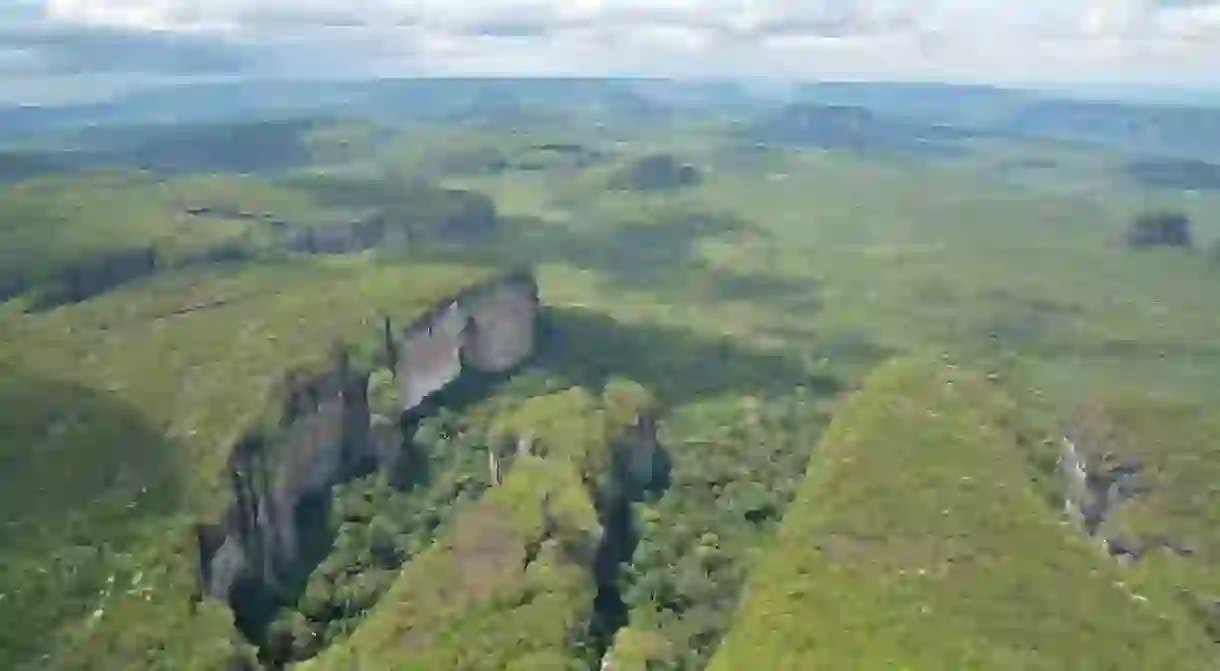The Real 'Lost World' is in Colombia

The vast Colombian National Park of the Serranía de Chiribiquete, or Chiribiquete Mountains, is one of the most untouched and unexplored wildernesses on the planet – covering 27,000 square kilometers, it is the biggest National Park in the county and extremely difficult to visit. At the heart of this real-life ‘Lost World’ are giant rock formations, mighty Amazonian rivers and ancient cave paintings.
Colombia is home to some of the most isolated wild places on earth – of the country’s 42 National Parks just over half are open to tourism – but none are more wild and undiscovered than the gigantic Chiribiquete National Park. Located in Colombia’s Amazon region, covering parts of both Caquetá and Guaviare departments, Chiribiquete has regularly been described as one of the most unexplored regions on the planet, one of the few truly ‘Lost World’s’ of the 21st century. The vast size of the park along with its difficult accessibility means that only a minimal part of Chiribiquete has ever been explored, and there are even those who believe that uncontacted indigenous peoples still reside within the park.
http://instagram.com/p/BM7CjqqFE0V/?tagged=chiribiquete
The Chiribiquete Mountains are a group of isolated table mountains in the heart of the Colombian Amazon – these giant rocky outcrops are part of the Guiana Shield, thought to be some of the oldest rocks on the planet. The rivers Cuñare and Mesay both flow through the heart of the park, forming huge waterfalls and rapids along the way, and the Apaporis, Yari and Tunia rivers all flow around the edges of Chiribiquete too. Along with these giant rock formations and rivers, the park is primarily made up of tropical moist forest and savannah.
Chiribiquete hit the news more recently due to the presence of ancient rock art, some of which may date back as many as 20,000 years. The American botanist Richard Evans Schultes first reported evidence of rock art during his exploration of the region in the 1940s, but in 2014 the Colombian photographer Francisco Forero Bonell was the first to locate and film these paintings (which he did from a helicopter). Around 20,000 different petroglyphs and pictographs have been reported from the region, and have been described by UNESCO as “a masterpiece of human creative genius […] and a monument of universal value.” Similar art can be seen close to nearby San José del Guaviare, but the scale and preservation of the Chiribiquete rock art is unrivalled in the region.

The remarkable size and incredible isolation of Chiribiquete have also preserved much of its enviable biodiversity – the park is home to at least five endemic species and more than 10 threatened or endangered ones. Jaguars and Harpy Eagles roam the park’s wild expanses and it’s quite possible that as-yet-unnamed species call Chiribiquete home. The most important species is probably the eponymous Chiribiquete Emerald hummingbird, which has become something of a Holy Grail for birders worldwide due to its endemic status and the near-impossibility of actually seeing one!

So why is it nearly impossible to see a Chiribiquete Emerald in the flesh? Essentially, the majority of the park is off-limits to tourism and recreational travel – scientists and filmmakers are occasionally granted access to Chiribiquete in order to study its biodiversity firsthand, but for the general public setting foot in this National Park remains nothing more than a dream. So how can a non-scientist experience this ancient Lost World for themselves? The good news is that it is possible to enjoy incredible views of the mighty rocks and forgotten rivers that make up Chiribiquete; the bad news is that it doesn’t come cheap.
At this moment, the only way to see Chiribiquete with your own eyes is to pay for a fly-over of the park with a specialist tour operator. There are a couple of companies offering the once-in-a-lifetime experience of flying over the vast park in a DC-3 plane for anyone lucky enough to be able to afford it: it costs at least US$600 for a one-hour flight over the park, departing from the nearby city of San José del Guaviare. Should this fall within your travel budget, then don’t hesitate to find the dates of the next flight and see one of the planet’s last true tracts of ‘Lost World’ with your own eyes – Chiribiquete is subject to the same threats as the rest of the Amazon and may not be this pristine ever again, so now is the time to experience it for yourself. If that seems unlikely then you can at least experience Chiribiquete through some of the incredible documentaries which have been filmed there, such as the amazing footage from the film Colombia: Magia Salvaje below: enjoy!













